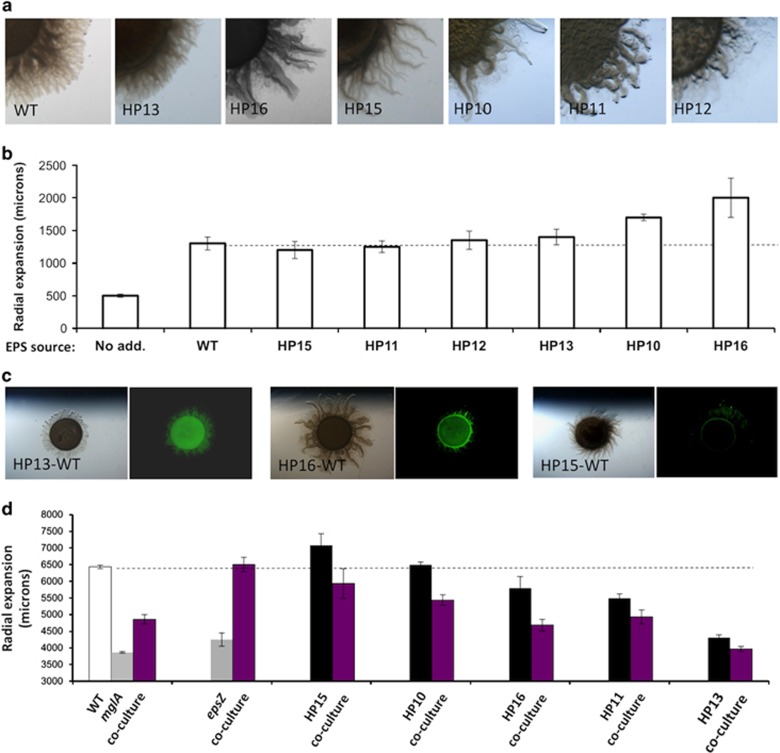Figure 6.
The role of EPS in intra-species interactions. (a) Cultures of natural isolates of M. xanthus were added to 0.5% agar CYE and branch structures of various sizes and shapes were observed. (b) EPS was extracted from these strains and added adjacent to lab wild-type strain DZ2. Relative to a no addition control sample, DZ2 shows increased migration with all EPS fractions tested. (c) Light microscopy (left) and fluorescence microscopy (right) of GFP-labeled DZ2 with wild isolates resulted in several outcomes, from confluent signal (left) to confinement of GFP signal to the initial inoculum (center) to minimal detection of GFP signal (right). (d) Mono-cultures and 1:1 co-cultures with WT DZ2 (purple bars) were prepared and swarm migration quantified for M. xanthus DZ2 (white bar), two DZ2-based single mutants (gray bars) and five natural isolates (black bars). The rate of migration in DZ2 derivatives in co-culture with wild type results in an additive or complementary migration, whereas co-culturing with natural isolates resulted in an inhibitory impact on migration across all strains tested.

